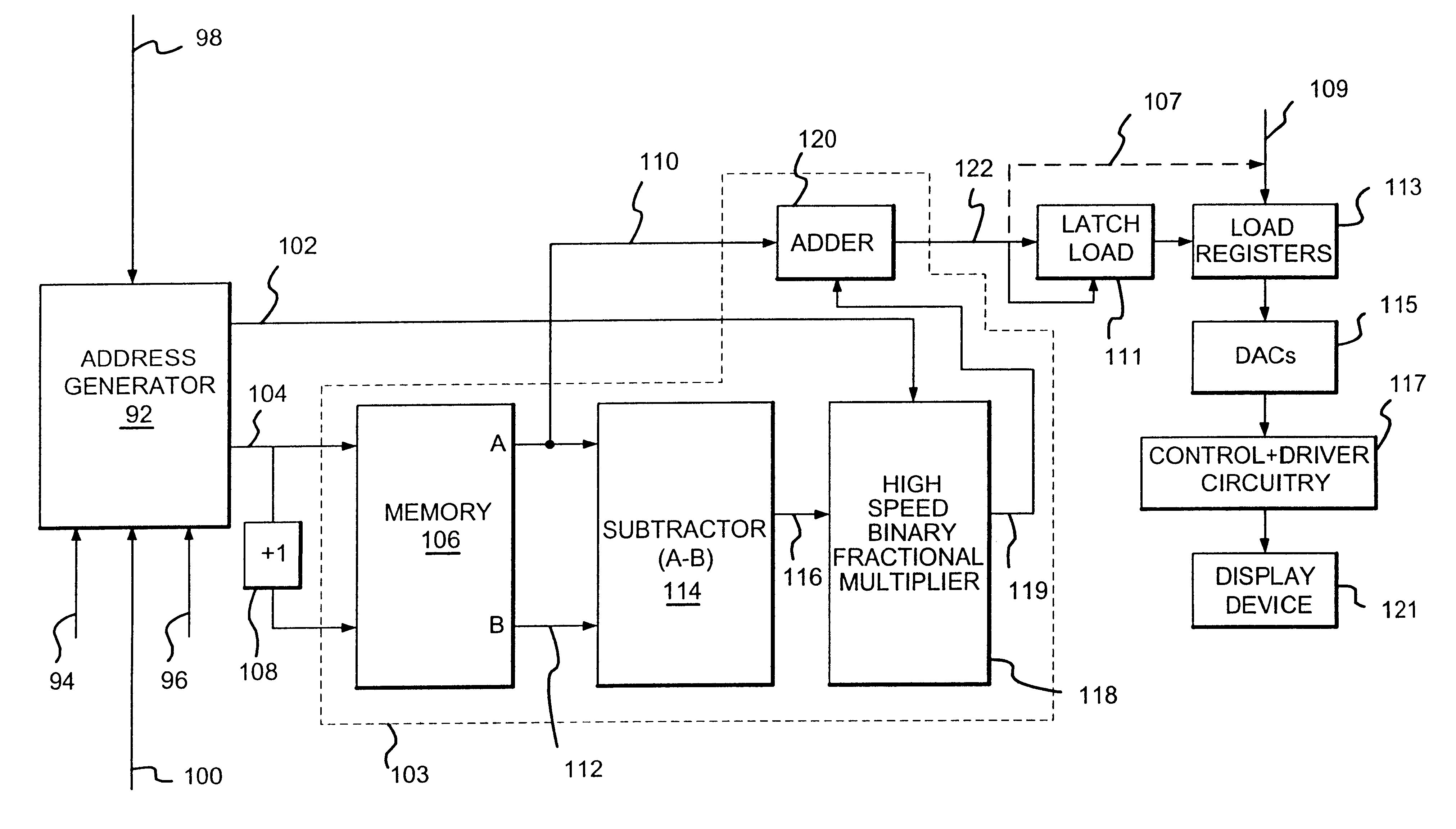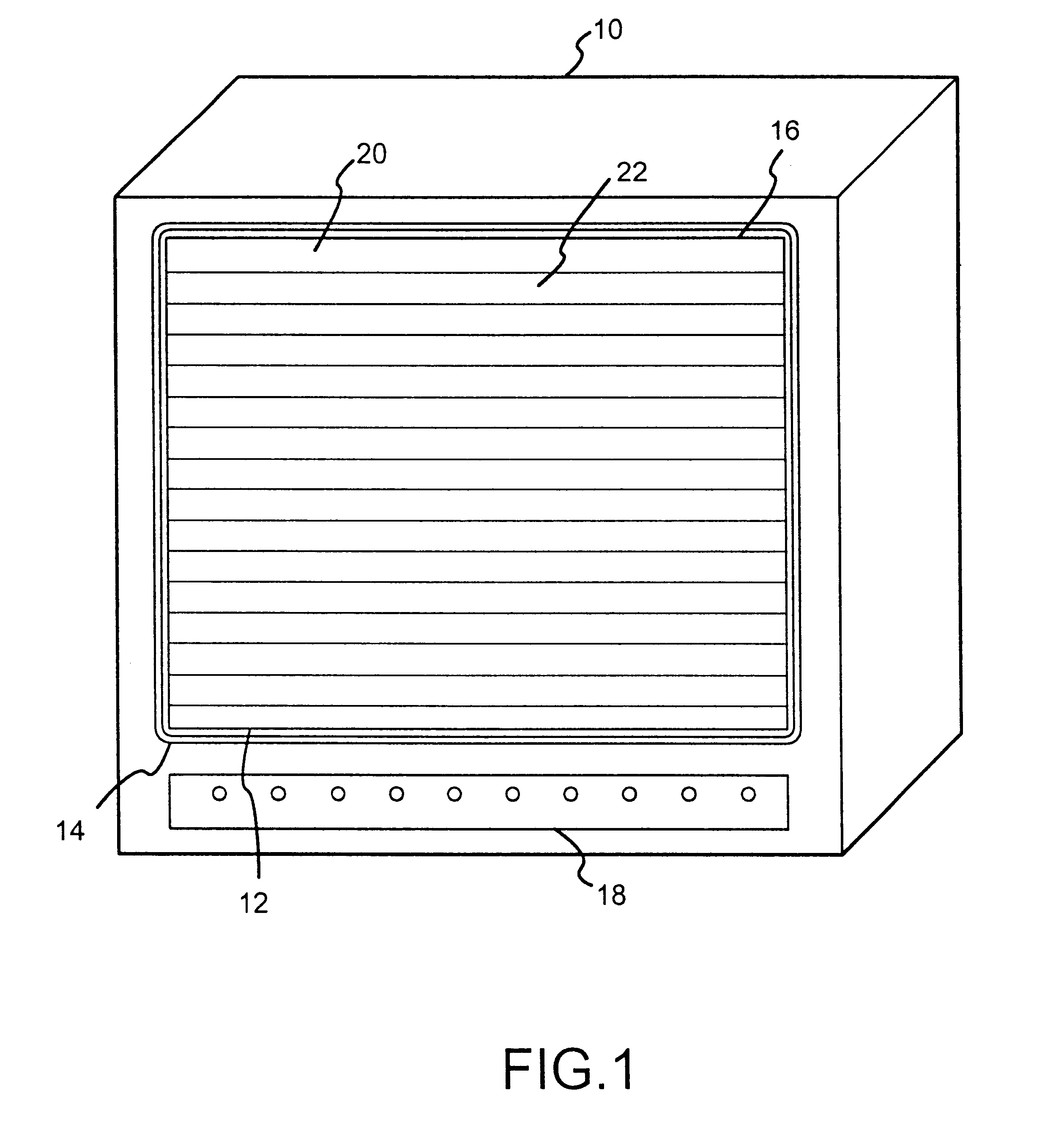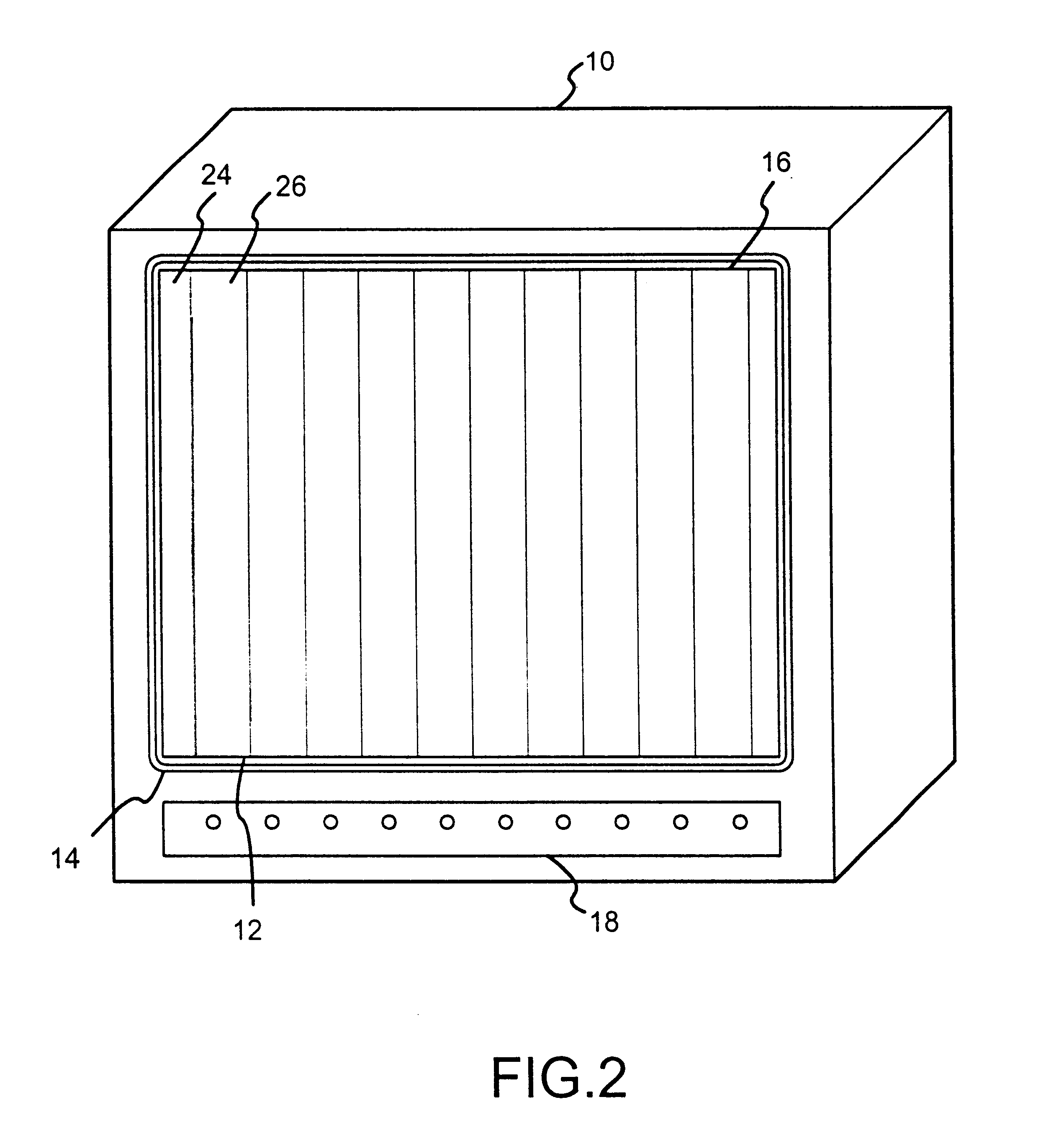High speed digital zone control
a digital zone control and high-speed technology, applied in the field of display device alignment correction and alignment, can solve the problems of high resolution signal, system less economic attractiveness, and large amount of data storag
- Summary
- Abstract
- Description
- Claims
- Application Information
AI Technical Summary
Benefits of technology
Problems solved by technology
Method used
Image
Examples
Embodiment Construction
FIG. 1 is a schematic illustration of a raster scanned display 10 that has a video screen 12 mounted inside a bezel 14. A video image 16 is projected onto the screen 12. User controls 18 control parameters such as the horizontal and vertical size and centering of the video image 16 on screen 12, as well as the various corrections for both horizontal and vertical geometries. As shown in FIG. 1, the video image is divided into a plurality of groups 20, 22, etc. as indicated by the horizontal lines on the video image 16. These groups, which are divided by the horizontal lines as illustrated in FIG. 1, identify specific physical locations for generating group correction values that are used for corrections in the vertical direction. The raster scanned display can comprise any one of a number of different types of displays including CRT's, projected light or laser beams, holograms, etc.
FIG. 2 is another schematic illustration of the display device 10 having a screen 12, a bezel 14, a vid...
PUM
 Login to View More
Login to View More Abstract
Description
Claims
Application Information
 Login to View More
Login to View More - R&D
- Intellectual Property
- Life Sciences
- Materials
- Tech Scout
- Unparalleled Data Quality
- Higher Quality Content
- 60% Fewer Hallucinations
Browse by: Latest US Patents, China's latest patents, Technical Efficacy Thesaurus, Application Domain, Technology Topic, Popular Technical Reports.
© 2025 PatSnap. All rights reserved.Legal|Privacy policy|Modern Slavery Act Transparency Statement|Sitemap|About US| Contact US: help@patsnap.com



